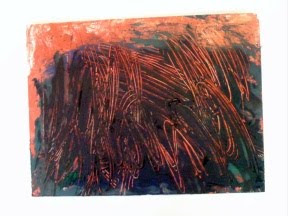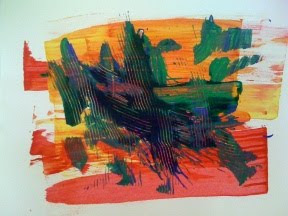


Kindergarten-Second Grade
PREPARATION: thicken blue and green paint with flour
DISCUSSION:
Show several of Richter’s Abstract Art work
What do you see?
Does it look like a photograph? It is an Abstract
What does it make you think of?
Water reflections
Tree bark
Evoke textures of natural objects: reflections, shadows
What tools do painters use?
Canvas, brush paint
Where do you see layers of paint?
What order do you think he painted them in?
How do you think he created these effects
Layers of paint scraped with a squeegee
Can an artist start a painting without knowing what they are going to create?
ARTIST:
Gerhard Richter (born February 9, 1932)
German visual artist.
Known for his blurred painting of photographs
Known for abstract paintings of pulled paint
PROJECT: Create a Richter inspired piece of art on Foam Core
Step1: using a sponge paint on your foam core using warm colors provided
Step2: Turn in sponges
Step3: gather painting materials: card board cut in small pieces , plastic forks
Popsicle sticks, etc.
Step4: using thickened greens and blues apply paint with cardboard squeegees
Step5: using forks and sticks scrape into the paint reveling the warm tones underneath
Step6: look at your work and see if you can find a texture that you see in nature.
MATERIALS:
Thicken blue and green paints
Warm Paints
Cardboard squeegees
Plastic forks and sticks
Foam core
Sponges
Adaptations: this project would be a great one for warm and cool color exploration.
This project was a really great way to expand the kids ideas about different ways we can create artwork. It was so much fun to experiment with different painting utensils. The kids had a blast and the results were amazing!!! Thanks to my friend Kerry for such a great lesson plan!!!





















.jpg)




